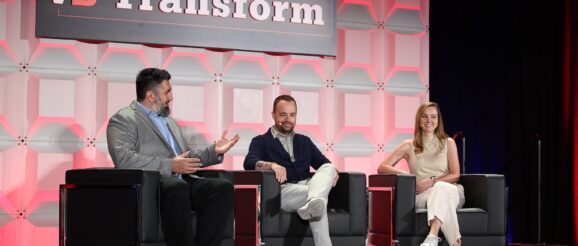How McDonald’s is serving up generative AI innovation | VentureBeat

Head over to our on-demand library to view sessions from VB Transform 2023. Register Here
When you think about McDonald’s, what comes to mind?
The Big Mac, fries, maybe the Hamburglar or the Shamrock Shake. Certainly (or at least probably) not advanced artificial intelligence (AI) and machine learning (ML) capabilities.
But the global fast food giant has been dabbling and making investments in various technologies over the last decade, particularly AI and ML, as discussed by two of its tech experts at this week’s VentureBeat Transform.
“AI is not new for our organization,” said Joanna Lapore, McDonald’s global director for foresight and capabilities exploration. “We have been progressing in this space at a rapid pace.”
Did you miss a session from VB Transform 2023? Register to access the on-demand library for all of our featured sessions.
The restaurant chain is 68 years old with locations globally, so the question for her and her team becomes: “How do you bring in a level of experimentation and progress and investment into new areas when you are such a systematized business?”
Moving ahead deliberately, with patience
McDonald’s has been able to siphon off resources investment to experiment, explore and pilot new technologies, said Lapore. She explained that she works in the Insights of the Future department of the business, which performs analysis and forecasting five to 10 years out.
She emphasized the importance of balancing opportunity with risk and observing the VUCA leadership theory: volatile, uncertain, complex, ambiguous.
“It’s very easy for CEOs or business leaders to think: Quick, quick, quick, we have to catch up to what other people are doing or start to invest in and create a strategy for generating AI quickly,” said Lapore.
But it’s much smarter to approach new concepts and technologies with patience and careful analysis.
“In a time of volatility, disruption and fast pace, you are actually more prone to make incorrect decisions,” she said, urging organizations to move in a methodical, careful way.
For example, she and her team use foresight tools and methods such as causal layered analysis, then ask questions such as: “What are we observing? What are the new innovations? What is a competitor doing?”
The goal is to then process what they’re observing, determine why it’s happening and what it could mean and explore multiple scenarios and potential outcomes.
“By being really intentional, you can be more thorough in understanding the more transient, nascent niche opportunity that might evolve into something different, versus what is here to stay,” she said.
Building trust in AI
One McDonald’s initiative is the deployment of automated voice ordering in drive-throughs in its U.S. restaurants, explained Zach Richard, the chain’s senior director for data science.
Still, he underscored the importance of including humans in the AI process. An unexpected lesson from the rollout was that crew members did not trust the technology to do its job. This has led to continued fine-tuning and improved metrics.
“If you’ve ever worked in a restaurant, it’s extremely difficult and time-consuming and you have to balance 10 different things at once,” he said.
Even if 1% of a machine is not operating as intended or has to be elevated to an employee, this takes human crew members out of their workflows and hampers customer experience, he said. “Trust is definitely an issue that we’re still working on.”
Valuing data and analytics expertise
Richard noted that McDonald’s values data and analytics expertise, with technical teams sitting close to the business side. While data scientists aren’t necessarily making decisions, he said, they’re definitely making strong recommendations to the business about what’s possible.
Furthermore, the company invests in business education for data scientists. It also hires people who are already strong at Python, database management and other specific skills, then upskills and trains them in other areas and on business knowledge.
Going forward with AI, one goal is to streamline processes by taking data that is unstructured or perhaps not even digitized and use large language models (LLMs) to make it more accessible. From there, a question-answer voice component would likely be integrated, said Richard.
Much like Lapore, he emphasized the importance of iterating in small, easily digestible chunks to see where AI is delivering value. McDonald’s is also looking to experiment with generative AI by involving technology, risk management and legal teams “the whole way on the journey.”
“It’s a very cross-functional effort to get this into the organization and to build our maturity to start adapting to the technology,” he said.
Cybersecurity a critical underpinning
In all this, cybersecurity is critical, said Lapore. McDonald’s has assembled a clearinghouse committee whose members have expertise in AI data, privacy and legal matters.
Protecting brand, assets, intel and data is paramount, she said, so McDonald’s is still in a “wait and see” mode when it comes to applying ChatGPT or other models into customer-facing technology. It comes down to thinking proactively and philosophically.
“We know that we are coming into a major cybersecurity event globally and we look at this as getting worse, not better,” she said.
VentureBeat’s mission is to be a digital town square for technical decision-makers to gain knowledge about transformative enterprise technology and transact. Discover our Briefings.
